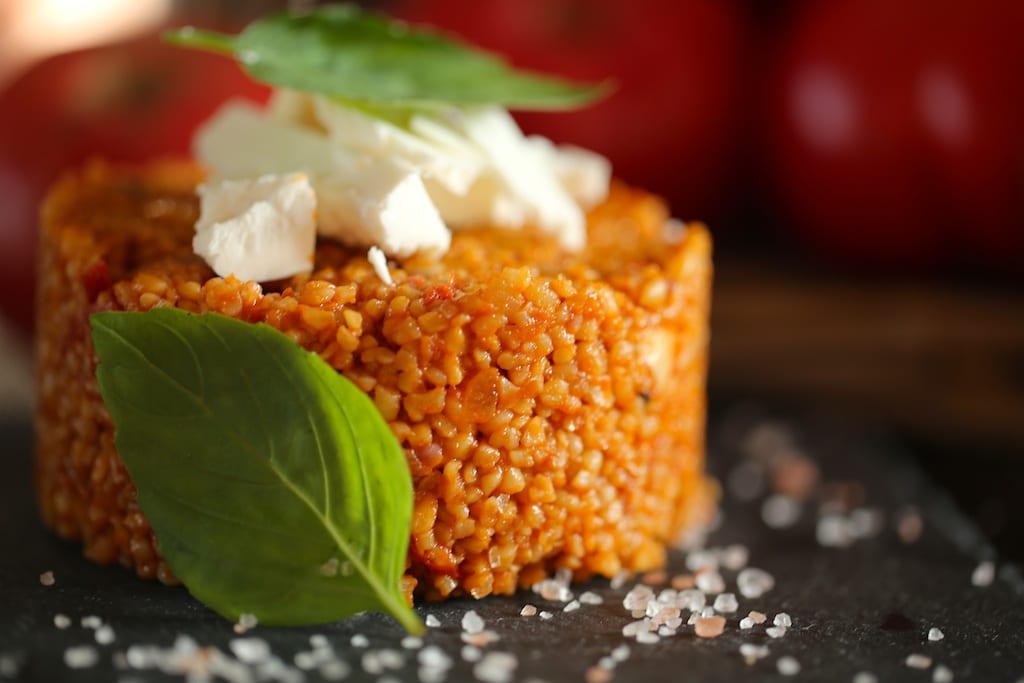What is Bulgur?
You know what bulgur is if you’ve ever enjoyed tabbouleh – it’s that nutty grain that nestles between cucumbers and cherry tomatoes in the classic Mediterranean salad.
Leading grain expert and author of “Ancient Grains for Modern Meals,” Maria Speck describes bulgur:
[box type=”download” border=”full”]”…bulgur is made by first boiling wheat, and then drying, cracking, and sorting it by size. The outer layers of the bran are removed — still bulgur retains a considerable amount of fiber, more than quinoa, oats or corn. This traditional convenience food is vital to many cuisines of the former Ottoman Empire, including those of Armenia, Turkey, Greece, Syria, and Iraq. for its versatility and countless preparations, some refer to it as Middle Eastern pasta!”[/box]
How Long Should You Cook Bulgur?
Cooking bulgur is very simple. You can either soak it overnight in a 1:5 ratio of grain to cold water, if you are pressed for time, toast the grains lightly in a skim of olive oil and then add water and simmer until the grains have absorbed all the water. The ratio of this method is 1 cup of grain to 1-1/4 cup of water and will yield 3 cups.
Swap in Bulgur for Other Grains
I’ve lived in Moscow for almost 20 years and I have a pantry – ergo – I’m a stockpiler. I can’t help it. If I see something like wild rice or quinoa I throw all of the packages into my supermarket trolley. Somehow, I ended up with a lot of bulgur in my pantry and even I can’t eat that much tabbouleh. Maria Speck to the rescue again with this delicious riff on rice pilaf. The bulgur teams up beautifully with that perennial late summer couple – tomato and basil. They are practically giving plum tomatoes away at the moment, so go for those and give this salad a try. It’s a wonderful barbecue or picnic side, it pairs wonderfully well with shrimp, chicken, beef and works very well alongside spinach, avocado, eggplant and zucchini. Topped with feta or goat cheese, it’s a meal!
Tomato-Infused Bulgur with BasilIngredients
Directions
Recipe adapted from one found in Ancient Grains For Modern Meals by Maria Speck |


